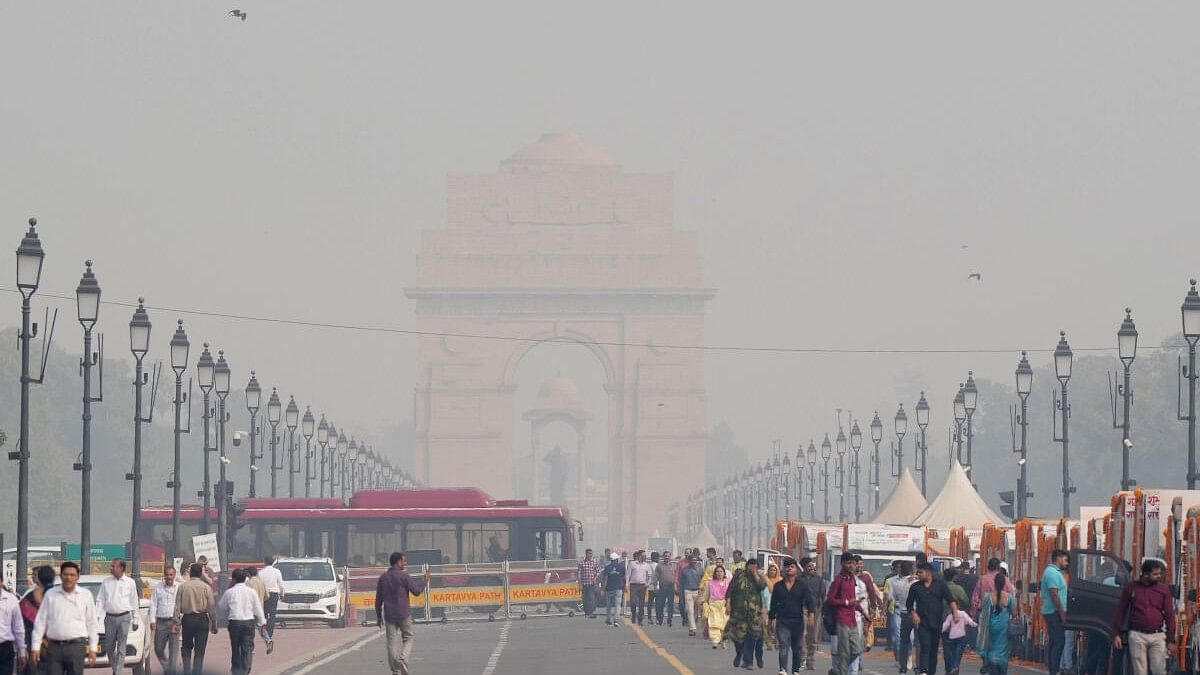
A thick blanket of smog covers the India Gate, in New Delhi, Monday, Nov. 6, 2023.
Credit: PTI Photo
New Delhi: The Delhi Police has issued challans to more than 2,200 vehicles in the national capital on Sunday in view of the increasing pollution and deteriorating air quality level here, officials said.
Plying old diesel/petrol vehicles and trucks, carrying non-essential material, in the national capital attracts a challan of Rs 20,000 under the Motor Vehicle Act.
A senior police officer said Delhi has 20 major borders, including Rajokari, Kapashera, Badarpur, Kalindi Kunj, Tikri, Auchandi, Bhopura, Apsara, Chilla, Singhu.
"We have 20 major borders in the national capital where we have deployed our staff. We are implementing the directions under GRAP IV and the non destined vehicles are being sent back. However, vehicles carrying essential commodities are being allowed. There are 13 pollution hot spots in the city where we have deployed the staff. The joint drive is being carried out with the MCD against the encroachment and unauthorised parking. We have deployed our staff during peak hours at the traffic congestion areas to ensure that the movement of traffic would not be affected," the officer said.
According to the data shared by Delhi Traffic Police, they have stopped 6,757 vehicles in the national capital on Sunday and challaned 2,216 vehicles -- 1,024 for not having Pollution Under Control (PUC) certificates, 217 challans were issued to BS-III and 975 to BS-IV vehicles.
Under Stage IV of the Graded Response Action Plan (GRAP), only CNG, electric and BS VI-compliant vehicles from other states are allowed to enter Delhi. Exemptions are granted only to those involved in essential services. All medium and heavy goods vehicles not engaged in essential services are also banned in the capital, according to the latest order of the Commission for Air Quality Management (CAQM).
The Delhi Traffic Police has been making efforts to mitigate air pollution stemming from vehicular emissions by focusing on regulation, intensive quality prosecution, special drives, integrated night checking and engineering intervention.
In October, the Delhi Traffic Police issued 17,989 challans to the vehicles for not having a PUCC, 58 challans of the trucks carrying sand/dust without covering, 31 challans to old-age diesel/petrol vehicles (more than 15/10 years), the data stated.
The 24-hour average Air Quality Index (AQI), recorded at 4 pm every day, worsened from 415 on Saturday to 454 on Sunday, prompting the Centre to implement all emergency measures mandated under the final Stage IV of its air pollution control plan called GRAP.
GRAP categorises actions into four stages: Stage I - 'Poor' (AQI 201-300); Stage II - 'Very Poor' (AQI 301-400); Stage III - 'Severe' (AQI 401-450); and Stage IV - 'Severe Plus' (AQI >450).